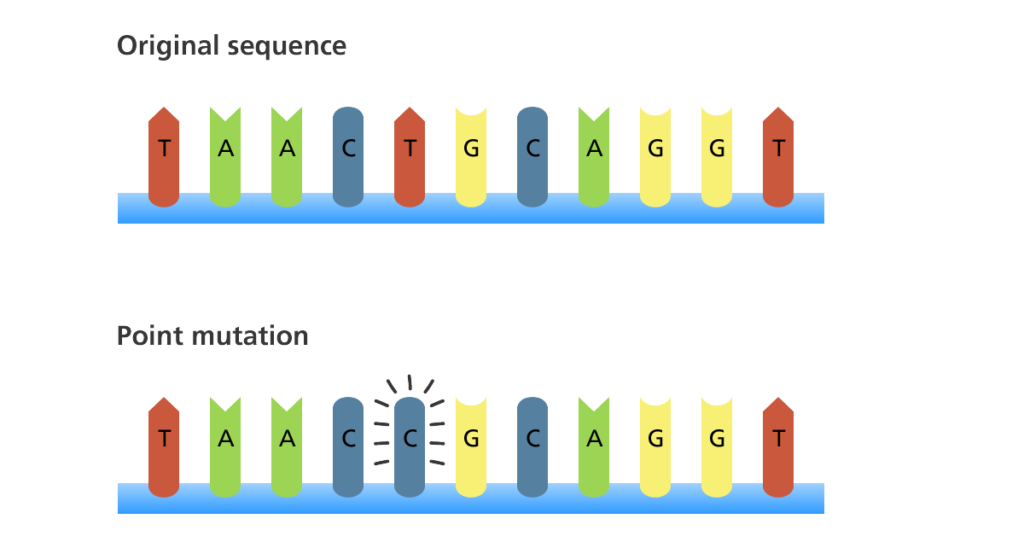Learning Outcomes
- Understand what a mutation is and how one generally occurs
Over a lifetime, our DNA can undergo changes or mutations in the sequence of bases: A, C, G and T. This results in changes in the proteins that are made. This can be a bad or a good thing.
A mutation is a change that occurs in our DNA sequence, either due to mistakes when the DNA is copied or as the result of environmental factors such as UV light and cigarette smoke. Mutations can occur during DNA replication if errors are made and not corrected in time. Mutations can also occur as the result of exposure to environmental factors such as smoking, sunlight and radiation. Often cells can recognize any potentially mutation-causing damage and repair it before it becomes a fixed mutation.
Mutations contribute to genetic variation within species. Mutations can also be inherited, particularly if they occur in a germ cell (reproductive egg or sperm). Mutations that have a positive effect are more likely to be continually passed on. For example, the disorder sickle cell anaemia is caused by a mutation in the gene that instructs the building of a protein called hemoglobin. This causes the red blood cells to become an abnormal, rigid, sickle shape. However, in African populations, having this mutation also protects against malaria.
However, mutation can also disrupt normal gene activity and cause diseases, like cancer. Cancer is the most common human genetic disease; it is caused by mutations occurring in a number of growth-controlling genes. Sometimes faulty, cancer-causing genes can exist from birth, increasing a person’s chance of getting cancer.

An illustration to show an example of a DNA mutation. Image credit: Genome Research Limited
Try It
Candela Citations
- What is a mutation?. Authored by: Genome Research Limited. Located at: http://www.yourgenome.org/facts/what-is-a-mutation. Project: YourGenome. License: CC BY-SA: Attribution-ShareAlike
